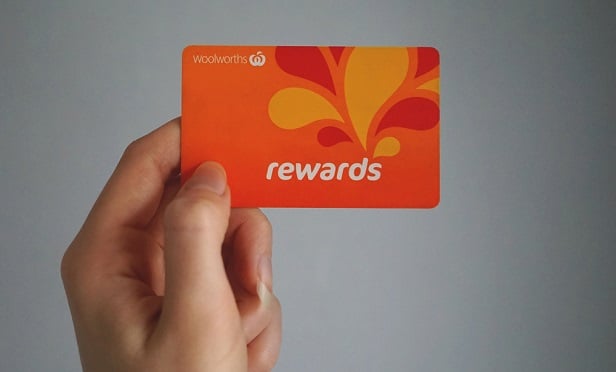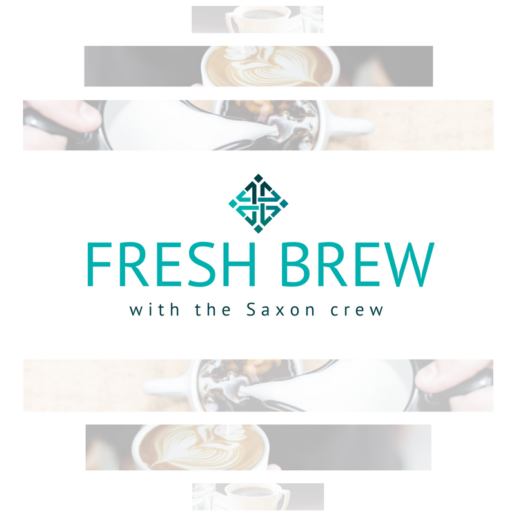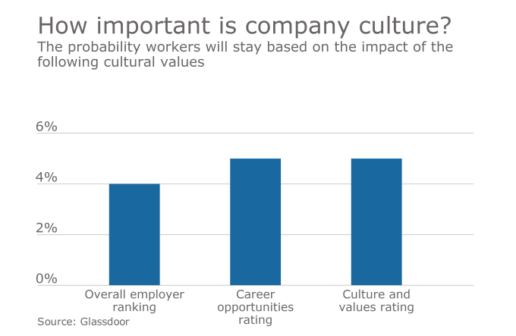4 perks to make your employees' lives easier and less stressful
Recruit top talent with ease and confidence when considering these tips on attractive, creative and innovative employment perks.
A 2016 survey from Glassdoor found that 57 percent of people looking for jobs said benefits and perks are among their top considerations when weighing offers. So how can a company stack the deck in its favor when recruiting top talent? Although some companies limit their benefits packages to traditional offerings such as health insurance, 401Ks and paid time off, a today’s forward-thinking employers know they need to find more creative ways to offer benefits that make a genuine difference in employees’ day-to-day work and personal lives.
As competition for employees intensifies, the race to improve employer-based services is likely to result in better options for employees. Unconventional benefits options come in many shapes and forms, but they share one thing in common: the goal of saving time for employees, reducing their stress, and ultimately improving their health and satisfaction at work.
All other things being equal, companies that offer innovative perks that speak to the well-being of their employees are more likely to attract and retain the top talent in their field. Here are a few such perks to consider.
Expectant-parent counseling
You’ve thrown the baby shower, cut the cake, helped carry staff gifts to the car—and you’ve explained the company’s parental leave policy in detail. As you wave Julie from accounting off with best wishes, you’re confident she’ll come back to her desk in a few months’ time.
But the truth is that 43 percent of women who have babies leave the workforce permanently within a matter of months. Many say it’s because they don’t have adequate support at home to enable them to resume their careers. That is why companies like Reddit and Slack use a service called Lucy that provides expectant employees help before, during, and after parental leave, including 24/7 messaging and one-on-one sessions that can be done in the home or online.
As Reddit VP of People Katelin Holloway put it, “It’s not enough to simply offer parental leave; every child and family is different and has independent needs.” By helping expectant parents find resources that meet their specific needs, you’re making an investment in your workforce that pays enormous dividends in retention, productivity, and morale.
Caregiving support
A Gallup survey revealed more than 1 in 6 full-time or part-time American workers has difficulty balancing caring for elderly parents with their work commitments. This results in decreased productivity and frequent leaves of absence. Companies can help their employees cope and stay engaged with their work by providing concierge services that offer amenities such as taking elderly parents to doctor’s appointments and eldercare coaching when choosing between assisted living options.
To help reduce stress (and retain highly specialized employees), take a cue from companies like Microsoft and Facebook, which provide caregiver paid-leave programs to help employees care for ailing family members or sick relatives.
Dry cleaning at work
Sometimes it’s the little things that save time during the workday that can push the needle in your favor as a potential employer. It may sound trivial, but company-provided dry cleaning is a perk that’s proving to be a big draw in workplaces from Wall Street to Silicon Valley. Service providers pick up employees’ laundry or dry cleaning items from work and return them to a designated employer closet in their office building—one less errand, and no more lost tickets. “People have lives to live, so I try to make it easy for them to deal with any of those personal errands that could take up time for them,” said Experian CEO Craig Boundy, speaking about his company’s employee benefits programs in an interview with the The Orange County Register.
Car maintenance and service
According to the U.S. Bureau of Labor Statistics, the average American household owns 1.9 vehicles and spends around 1.5 percent of its annual income on auto maintenance and repairs. Cars are a significant investment for most of us, so the more you can help potential employees save time and money on maintaining their vehicles, the more tempting you’ll become as an employer. Growing numbers of innovative companies provide car repair services to help employees save money, find the best quality mechanics, and reduce stress associated with the entire process.
Some firms also offer on-site car wash services, giving employees peace of mind and a positive outlook as they drive home after work. Several big Silicon Valley corporations —including eBay, SanDisk, Cisco, and Oracle—use BoosterFuels to fill employees’ gas tanks while they’re at work. It saves employees time and protects them from potential accidents or robberies at gas stations.
SOURCE:
Weiss Y (31 May 2018) "4 perks to make your employees' lives easier and less stressful" Web Blog Post]. Retrieved from https://www.benefitspro.com/2018/05/11/4-perks-to-make-your-employees-lives-easier-and-le/
Fresh Brew With Tabitha McIntosh
Welcome to our brand new segment, Fresh Brew, where we will be exploring the delicious coffees, teas, and snacks of some of our employees! You can look forward to our Fresh Brew blog post on the first Friday of every month.
“Each client is different!”
Tabitha enjoys helping customers and prides herself on the understanding of their needs and the discovery of knowledge along the way. She especially enjoys following through with the customer and learning new things that will help her excel in her career and better service future clients.

Favorite Brew
Pumpkin Spice Latte
“I love grabbing this from either Starbucks or Royce Cafe in Lebanon!”
Favorite Snack
…Nothing!
“I like my coffee on it’s own. There are plenty of calories in each cup!”
Paid Family Leave claims processing tips
New York is setting a trend with new Paid Family Leave policy. New law could trigger states to follow their lead in the near future.
While most of us realize that change is a part of life, few of us can afford to sacrifice our paycheck when it happens.
To help ensure that New Yorkers do not find themselves in this situation, the state signed into law the nation’s strongest and most comprehensive Paid Family Leave (PFL) policy. Effective Jan. 1, 2018, the law provides residents with job-protected, paid leave to bond with a newborn, care for a loved one with a serious illness, or tend to family matters when a loved one is called to active military service.
The new law encompasses numerous leave types, eligibilities and durations, so processing a PFL claim can be confusing. To unmuddy the waters, let’s dive into the who, when, how and what regarding PFL.
Who is eligible?
Added to a company’s Disability Benefits Law (DBL) policy as a rider, Paid Family Leave was created for private-sector organizations with at least one employee who works in New York State at least 30 days of the year. Public companies may opt to provide coverage as well, but it is not required.
To be eligible for PFL, applicants must be employed by a covered employer at the time they apply.
- Employees with a regular work schedule of 20 or more hours per week are eligible after 26 consecutive weeks of employment. This includes sick or vacation time, but may not count other covered leaves.
- Employees with a regular work schedule of fewer than 20 hours per week are eligible after 175 days worked, which do not need to be consecutive.
How it works
In 2018, both full- and part-time employees are eligible to take up to eight weeks of PFL and receive 50% of their average weekly wage (AWW). The weekly earnings under PFL are currently capped at $652.96, which is 50% of the New York State Average Weekly Wage (NYSAWW) of $1,305.92. (For details, visit www.ny.gov.)
New Yorkers stand to benefit even more in the years to come, as the state plans to increase PFL incrementally, reaching 12 weeks by 2021.
PFL benefits are funded through a small weekly payroll deduction. The deduction is a percentage of an employee’s weekly wage — up to the aforementioned cap.
To provide some perspective, the current payroll contribution is 0.126% of a New Yorker’s gross weekly earnings, capped at a total annual contribution of $85.56. For example, an employee earning $1,200 a week in 2018 would pay $1.51 per week. To calculate an employee’s weekly deduction, simply enter the required information at www.ny.gov/paid-family-leave-calculator.
A healthy dose of security
Not only will eligible applicants receive a portion of their wages while on leave, qualifying employees can rely on continued health insurance coverage while taking PFL. Employers are required by law to continue the existing health insurance benefits. If employees contribute to the cost of their health insurance, they are also required to continue paying their portion while on leave.
It is important to note that Paid Family Leave does notreplace disability benefits coverage. Disability benefits are meant to cover off-the-job personal illness or injury. PFL is designed to provide paid time off to care for family that need assistance.
In fact, some employees may be eligible for both PFL bonding and disability benefits for maternity at the same time, although they may not be taken simultaneously, according to the New York State Workers Compensation Board.
Leave categories
PFL is flexible and may occur in a variety of ways. The applicant has options when deciding how much time to take at any given time. While the law states that a 30 day leave notice is required, there are considerations for times when life surprises us.
There are four main PFL categories:
- Continuous leave: The employee takes the entire 8 weeks of PFL without interruption.
- Intermittent leave:The employee takes leave in increments as short as one day at a time.
- Foreseeable event:The leave begins following a planned event such as a birth, adoption, surgery or military ceremony.
- Non-foreseeable event:The leave is in response to an accident or an unexpected surgery.
PFL-worthy events
As mentioned earlier, an employee can request PFL for one of three reasons. The State of New York classifies these leaves as Bonding, Family Care and Military Exigency. Each type has its own eligibility terms and required documentation. If your company or agency does not have the required forms on hand, they are available at www.ny.gov. Employees requesting PFL are required to do so at least 30 days in advance, when possible, starting with Form PFL-1.
Bonding Leave— A parent may take PFL during the first 12 months following the birth, adoption or foster placement of a child. To start the application process, an employee will need to obtain the “Bond with a Newborn, Newly Adopted or Fostered Child” forms package.
From there, the employee would complete a “Request for Family Leave” (Form PFL-1) and submit it to his or her employer, who will complete the employer section and then return it to the employee. A PFL-1 is required for all three types of leave. Also required is the “Bonding Certification” (Form PFL-2). The employee must complete and submit both forms, along with any supporting documentation (e.g., birth certificate, adoption certificate, etc.), to the employer’s insurance carrier.
Family Care Leave— New Yorkers have the right to take time off to care for a loved one with a serious health condition. This individual could be a spouse or domestic partner, child or stepchild, as well as a parent, stepparent, parent-in-law, grandparent or grandchild.
After obtaining a “Care for a Family Member with Serious Health Condition” forms package, the employee must submit a completed PFL-1 to their employer, who will complete it and return it to the employee. Additionally, the employee’s family member (the care recipient), or their authorized representative, is required to complete a “Release of Personal Health Information Under the Paid Family Leave Law” (Form PFL-3). Upon completing the release, the individual will submit it to his or her health care provider.
The second form the employee is required to complete is the “Health Care Provider Certification” (Form PFL-4). Upon completion, this form will go to the employee’s health care provider for review, then to the care recipient and ultimately back to the employee. The employee must submit the PFL-4, along with his or her completed PFL-1, and PFL-3, to his or her employer’s insurance carrier.
Military Exigency Leave — If an employee’s spouse, domestic partner, child or parent is deployed abroad or has been notified of an impending deployment, the employee can take PFL to assist or support the military member and his or her family. Examples include making financial and/or legal arrangements on the military member’s behalf, attending military-related ceremonies for the deployed individual and tending to urgent childcare needs created by the family member’s deployment.
To begin the process, the employee must obtain the “Assist Families in Connection with a Military Deployment” forms package. Next, the employee will need to complete a PFL-1 and submit the form to his or her employer. The employee must then complete the “Military Qualifying Event” (Form PFL-5), attaching any supporting documentation (e.g., covered active duty orders, letter from the military unit confirming deployment, etc.). The employee will then submit his or her employer-approved PFL-1 and completed PFL-5 to the employer’s insurance carrier.
Employer obligations
For employers, when it comes to PFL claims, compliance is key. Here are a few important obligations:
- New York employers are required to complete and return a submitted PFL-1 within three business days of receiving it.
- If an employer provides health care, the employer must maintain coverage while the employee is out on leave.
- As mentioned earlier, employers must provide the same or a similar job upon the employee’s return from leave.
While honoring these obligations are the law, doing so can be challenging for business owners, especially in the case of an intermittent leave. This new coverage will ramp up over the next four years, rates and benefit details are subject to changes by the New York Department of Financial Services (NYDFS).
It is critical to stay in-the-know about this new and developing coverage. Employers can look to their local insurance professionals for help navigating the ins and outs of this groundbreaking law, starting with filling out an employee census to determine their related premiums.
SOURCE:
Maas J (31 May 2018). "Paid Family Leave claims processing tips" [Web Blog Post]. Retrieved from address https://www.propertycasualty360.com/2018/05/25/paid-family-leave-claims-processing-tips/
The Most Desirable Employee Benefits
When it comes to hiring new employees, benefits can make or break the process. Hire with confidence when considering these tips on attractive and affordable employment perks.
In today’s hiring market, a generous benefits package is essential for attracting and retaining top talent. According to Glassdoor’s 2015 Employment Confidence Survey, about 60% of people report that benefits and perks are a major factor in considering whether to accept a job offer. The survey also found that 80% of employees would choose additional benefits over a pay raise.
Google is famous for its over-the-top perks, which include lunches made by a professional chef, biweekly chair massages, yoga classes, and haircuts. Twitter employees enjoy three catered meals per day, on-site acupuncture, and improv classes. SAS has a college scholarship program for the children of employees. And plenty of smaller companies have received attention for their unusual benefits, such as vacation expense reimbursement and free books.
But what should a business do if it can’t afford Google-sized benefits? You don’t need to break the bank to offer attractive extras. A new survey conducted by my team at Fractl found that, after health insurance, employees place the highest value on benefits that are relatively low-cost to employers, such as flexible hours, more paid vacation time, and work-from-home options. Furthermore, we found that certain benefits can win over some job seekers faced with higher-paying offers that come with fewer additional advantages.
As part of our study, we gave 2,000 U.S. workers, ranging in age from 18 to 81, a list of 17 benefits and asked them how heavily they would weigh the options when deciding between a high-paying job and a lower-paying job with more perks.
Better health, dental, and vision insurance topped the list, with 88% of respondents saying that they would give this benefit “some consideration” (34%) or “heavy consideration” (54%) when choosing a job. Health insurance is the most expensive benefit to provide, with an average cost of $6,435 per employee for individual coverage, or $18,142 for family coverage.
The next most-valued benefits were ones that offer flexibility and improve work-life balance. A majority of respondents reported that flexible hours, more vacation time, more work-from-home options, and unlimited vacation time could help give a lower-paying job an edge over a high-paying job with fewer benefits. Furthermore, flexibility and work-life balance are of utmost importance to a large segment of the workforce: parents. They value flexible hours and work-life balance above salary and health insurance in a potential job, according to a recent survey by FlexJobs.
Eighty-eight percent of respondents said they’d give some or heavy consideration to a job offering flexible hours, while 80% would give consideration to a job that lets them work from home. Both flexible hours and work-from-home arrangements are affordable perks for companies that want to offer appealing benefits but can’t afford an expensive benefits package. Both of these benefits typically cost the employer nothing — and often save money by lowering overhead costs.
More vacation time was an appealing perk for 80% of respondents. Paid vacation time is a complicated expense, since it’s not simply the cost of an employee’s salary for the days they are out; liability also plays into the cost. American workers are notoriously bad at using up their vacation time. Every year Americans leave $224 billion dollars in unused vacation time on the table, which creates a huge liability for employers because they often have to pay out this unused vacation time when employees leave the company. Offering an unlimited time-off policy can be a win-win for employer and employee. (Over two-thirds of our respondents said they would consider a lower-paying job with unlimited vacation.) For example, HR consulting firm Mammoth considers its unlimited time-off policy a successnot just for what it does but also for the message it sends about company culture: Employees are treated as individuals who can be trusted to responsibly manage their workload regardless of how many days they take off.
Switching to an unlimited time-off policy can solve the liability issue; wiping away the average vacation liability saves companies $1,898 per employee, according to research from Project: Time Off. And with only 1%–2% of companies currently using an unlimited time-off policy, according to the Society for Human Resource Management (SHRM), it’s clearly a benefit that can make companies more attractive.
Contrary to what employers might expect, unlimited time off doesn’t necessarily equal less productive employees and more time out of the office. A survey from The Creative Group found that only 9% of executives think productivity would decrease significantly if employees used more vacation time. In some cases, under an unlimited time-off policy, employees take the same amount of vacation time. We adopted an unlimited time-off policy at Fractl about a year ago and haven’t seen a negative impact on productivity. Our director of operations, Ryan McGonagill, says there hasn’t been a large spike in the amount of time employees spend out of the office, but the quality of work continues to improve.
Student loan and tuition assistance also ranked highly on the list of coveted benefits, with just under half of respondents reporting that these bonuses could nudge them toward a lower-paying job. A benefits survey from SHRM found that only 3% of companiescurrently offer student loan assistance, and 52% of companies provide graduate educational assistance. Although education assistance sounds costly, companies can take advantage of a tax break; employers can provide up to $5,250 per employee per year for tuition tax free.
Job benefits that don’t directly impact an individual’s lifestyle and finances were the least coveted by survey respondents, such as in-office freebies like food and coffee. Company-sponsored gatherings like team-bonding activities and retreats were low on the list as well. This isn’t to say these benefits aren’t valued by employees, but rather that these perks probably aren’t important enough on their own to convince a job candidate to choose a company.
We noticed gender differences regarding certain benefits. Most notable, women were more likely to prefer family benefits like paid parental leave and free day care services. Parental leave is of high value to female employees: 25% of women said they’d give parental leave heavy consideration when choosing a job (only 14% of men said the same). Men were more likely than women to value team-bonding events, retreats, and free food. Both genders value fitness-related perks, albeit different types. Women are more likely to prefer free fitness and yoga classes, while men are more likely to prefer an on-site gym and free gym memberships.
Our survey findings suggest that providing the right mix of benefits that are both inexpensive and highly sought after among job seekers can give a competitive edge to businesses that can’t afford high salaries and pricier job perks.
SOURCE:
Jones K (30 May 2018). [Web Blog Post]. Retrieved from address https://hbr.org/2017/02/the-most-desirable-employee-benefits
How to get the most out of a day off
Time off is necessary but planning an extended vacation may be stressful. These pointers will help show you how micro-vacations can positively benefit your lifestyle.
The idea of “vacation” often conjures up thoughts of trips to faraway lands. While it’s true that big trips can be fun and even refreshing, they can also take a lot of time, energy, and money. A lot of people feel exhausted just thinking about planning a vacation—not just navigating personal commitments and school breaks, but deciding how to delegate major projects or put work on hold, just so they can have a stress-free holiday. Because of this, some might put off their time away, figuring they’ll get to it when their schedule isn’t so demanding, only to discover at the end of the year that they haven’t used up their paid time off.
In my experience as a time management coach and as a business owner, I’ve found that vacations don’t have to be big to be significant to your health and happiness. In fact, I’ve been experimenting with the idea of taking “micro-vacations” on a frequent basis, usually every other week. These small bits of time off can increase my sense of happiness and the feeling of having “room to breathe.”
From my point of view, micro-vacations are times off that require you to use a day or less of vacation time. Because of their shorter duration, they typically require less effort to plan. And micro-vacations usually don’t require you to coordinate others taking care of your work while you’re gone. Because of these benefits, micro-vacations can happen more frequently throughout the year, which allows you to recharge before you’re feeling burnt out.
If you’re feeling like you need a break from the day-to-day but can’t find the time for an extended vacation, here are four ways to add micro-vacations to your life.
Weekend trips.Instead of limiting vacations to week-long adventures, consider a two- to three-day trip to someplace local. I’m blessed to live in Michigan, and one of my favorite weekend trips is to drive to Lake Michigan for some time in a little rented cottage on the shore or to drive up north to a state park. Especially if you live in an urban area, traveling even a few hours can make you feel like you’re in a different world.
To make the trip as refreshing as possible, consider taking time off on Friday so you can wrap up packing, get to your destination, and do a few things before calling it a night. That still leaves you with two days to explore the area. If you get home by dinnertime on Sunday, you can unpack and get the house in order before your workweek starts again.
There may be a few more e-mails than normal to process on Monday, but other than that, your micro-vacation shouldn’t create any big work pileups.
Margin for personal to-do items.Sometimes getting the smallest things done can make you feel fantastic. Consider taking an afternoon—or even a full day—to take an unrushed approach to all of the nonwork tasks that you really want to do but struggle to find time to do. For example, think of those appointments like getting your hair cut, nails done, oil changed, or doctor visits. You know that you should get these taken care of but finding the time is difficult with your normal schedule.
Or perhaps you want to take the time to do items that you never seem to get to, like picking out patio furniture, unpacking the remaining boxes in the guest room, or setting up your retirement account. You technically could get these kinds of items done on a weeknight or over the weekend. But if you’re consistently finding that you’re not and you have the vacation time, use it to lift some of the weight from the nagging undone items list.
Shorter days for socialization.As individuals get older and particularly after they get married, there tends to be a reduction in how much time they spend with friends. One way to find time for friends without feeling like you’re sacrificing your family time is to take an hour or two off in a day to meet a friend for lunch or to get together with friends before heading home. If you’re allowed to split up your vacation time in these small increments, a single vacation day could easily give you four opportunities to connect with friends who you otherwise might not see at all.
If you struggle to have an uninterrupted conversation with your spouse because your kids are always around, a similar strategy can be helpful. Find days when one or both of you can take a little time off to be together. An extra hour or two will barely make a difference at work but could make a massive impact on the quality of your relationship.
Remote days for decompression. Many offices offer remote working options for some or all of the week. If that’s offered and working remotely is conducive to your work style and your tasks, take advantage of that option.
Working remotely is not technically a micro-vacation, but it can often feel like one. (Please still do your work—I don’t want to get in trouble here!) If you have a commute of an hour or more each way, not having to commute can add back in two or more hours to your life that can be used for those personal tasks or social times mentioned above.
Also, for individuals who work in offices that are loud, lack windows, or where drive-by meetings are common, working remotely can feel like a welcome respite. Plus, you’re likely to get more done. A picturesque location can also give you a new sense of calm as you approach stressful projects. I find that if I’m working in a beautiful setting, like by a lake, it almost feels as good as a vacation. My surroundings have a massive impact on how I feel.
Instead of seeing “vacation” as a large event once or twice a year, consider integrating in micro-vacations into your life on a regular basis. By giving yourself permission to take time for yourself, you can increase your sense of ease with your time.
SOURCE:
Saunders E (28 May 2018). [Web Blog Post]. Retrieved from address https://hbr.org/2018/05/how-to-get-the-most-out-of-a-day-off
Fresh Brew With Kevin Hagerty
Welcome to our brand new segment, Fresh Brew, where we will be exploring the delicious coffees, teas, and snacks of some of our employees! You can look forward to our Fresh Brew blog post on the first Friday of every month.
“Try to save what you can. You’ll be glad you did later.”
Kevin has been a Financial Advisor for 18 years specializing in financial planning solutions.
He and his wife Lori enjoy spending their free time involved in various school and sporting events with their two sons. They also enjoy spending time visiting family on the shores of Northern Michigan’s Lakes and working on various projects around the house like landscaping.

Favorite Brew
Flavored Coffee
“I just like it! Highly recommend Carabello Coffee for your flavored coffee needs!”
10 perks that help attract and retain workers
Job seekers and employees today have more control over their careers than ever before. Leaving current positions for better opportunities, and being more selective when applying for a new job, are now commonplace.
With the war for talent in full effect, companies of all sizes have had to take a close look at their compensation and employee benefits to ensure that they meet, or preferably exceed, expectations.
While keeping up with the latest employee benefits trends is one great way to maximize benefit plans, employers should also explore additional employee and workplace perks to help with recruiting, retention and engagement.
1. Free snacks and coffee
 (Photos: Shutterstock)
(Photos: Shutterstock)
An often-overlooked way to enhance the workplace is to provide employees with complimentary snacks and coffee. Not only does this help employees save a few dollars each day, but office snacks have shown to increase workplace production. And offering employees healthy alternatives can get people more energized and involved with a company’s overall wellness program.
2. Flexible work schedules
 One of the biggest trends in the business world has been a shift away from the traditional 9 to 5 work day. While some positions require such a schedule, more and more companies are enabling employees to have more flexibility with their working hours. As a matter of fact, many businesses are including flexible working schedules in their job descriptions and on career sites to help attract younger job seekers. As work-life balance continues to become more important to employees, flexible working schedules can be valuable perk for employers to offer.
One of the biggest trends in the business world has been a shift away from the traditional 9 to 5 work day. While some positions require such a schedule, more and more companies are enabling employees to have more flexibility with their working hours. As a matter of fact, many businesses are including flexible working schedules in their job descriptions and on career sites to help attract younger job seekers. As work-life balance continues to become more important to employees, flexible working schedules can be valuable perk for employers to offer.
3. Working from home
 While telecommuting is becoming more common, not all employees can exclusively work-from-home. However, enabling employees to work at home on occasion can be a great perk for keeping employees happy and engaged. Providing employees with the tools and resources necessary to work from home when needed can greatly assist with lowering turnover, and can also help reduce stress and improve the employee experience.
While telecommuting is becoming more common, not all employees can exclusively work-from-home. However, enabling employees to work at home on occasion can be a great perk for keeping employees happy and engaged. Providing employees with the tools and resources necessary to work from home when needed can greatly assist with lowering turnover, and can also help reduce stress and improve the employee experience.
4. Employee assistance programs
 A greater focus on employee wellness – both physical AND mental – is occurring in companies big and small. One way to help with this initiative is to have an employee assistance program (EAP). These programs provide counseling to employees for both professional and personal issues, and can include consultations with licensed clinicians for financial and legal services, grief counseling, and day-to-day support for full-time employees and anyone in their household.
A greater focus on employee wellness – both physical AND mental – is occurring in companies big and small. One way to help with this initiative is to have an employee assistance program (EAP). These programs provide counseling to employees for both professional and personal issues, and can include consultations with licensed clinicians for financial and legal services, grief counseling, and day-to-day support for full-time employees and anyone in their household.
5. Company events
 You have probably seen or heard of Fortune-500 companies throwing elaborate and expensive events for their workforce. While small employers can’t do something to this level, having company-sponsored events throughout the year is a great way to boost employee morale and build a culture. These events also present an opportunity to boost employer branding and recruitment marketing efforts. Things like company picnics, holiday parties, and even individual team outings (such as a bowling night) help to boost company morale.
You have probably seen or heard of Fortune-500 companies throwing elaborate and expensive events for their workforce. While small employers can’t do something to this level, having company-sponsored events throughout the year is a great way to boost employee morale and build a culture. These events also present an opportunity to boost employer branding and recruitment marketing efforts. Things like company picnics, holiday parties, and even individual team outings (such as a bowling night) help to boost company morale.
6. Employee referral programs
 Hiring the best talent is a mission all companies have in common. But with recruiting more challenging than ever, it can be difficult to accomplish this goal. However, establishing an employee referral program (especially one that provides a cash or bonus reward) is a fantastic way to get your entire company involved with recruiting. These programs also help employees feel more invested in their organizations, especially if they can bring friends or professional colleagues to their organization.
Hiring the best talent is a mission all companies have in common. But with recruiting more challenging than ever, it can be difficult to accomplish this goal. However, establishing an employee referral program (especially one that provides a cash or bonus reward) is a fantastic way to get your entire company involved with recruiting. These programs also help employees feel more invested in their organizations, especially if they can bring friends or professional colleagues to their organization.
7. Lunch and learns
 Learning and development is important to employees. While investing in large-scale programs and bringing in industry experts on a routine basis may not be possible, each company has their own subject-matter-experts who can provide learning opportunities to their co-workers. A monthly lunch and learn session can be a great way to inform the entire company on new initiatives and projects, as well as boost employee engagement throughout the company.
Learning and development is important to employees. While investing in large-scale programs and bringing in industry experts on a routine basis may not be possible, each company has their own subject-matter-experts who can provide learning opportunities to their co-workers. A monthly lunch and learn session can be a great way to inform the entire company on new initiatives and projects, as well as boost employee engagement throughout the company.
8. Employee discounts
 Another great additional perk that employees will enjoy are discounts on certain items or events. Discounts on items like clothing brands, tech, Broadway shows, sporting events, and many others can help employees save money while enjoying things that they enjoy. These types of perks are becoming increasingly popular, even for smaller employers and can be a great tool in recruiting. Not to mention the role they play with employee happiness, engagements, and ultimately retention.
Another great additional perk that employees will enjoy are discounts on certain items or events. Discounts on items like clothing brands, tech, Broadway shows, sporting events, and many others can help employees save money while enjoying things that they enjoy. These types of perks are becoming increasingly popular, even for smaller employers and can be a great tool in recruiting. Not to mention the role they play with employee happiness, engagements, and ultimately retention.
9. Summer hours
 We discussed earlier about the value of flexible work schedules. A fantastic addition to an already popular perk, giving employees summer working hours are a great way to boost happiness and morale. For example, many companies let employees leave the office early on Fridays to get a head start on their weekend plans. With work-life balance becoming more important, this simple perk can be a great for current and future employees alike!
We discussed earlier about the value of flexible work schedules. A fantastic addition to an already popular perk, giving employees summer working hours are a great way to boost happiness and morale. For example, many companies let employees leave the office early on Fridays to get a head start on their weekend plans. With work-life balance becoming more important, this simple perk can be a great for current and future employees alike!
10. Employee rewards and recognition
 Boosting employee engagement and the overall employee experience are critical objectives for all companies today. An excellent way to help with these goals are to recognize and reward employees throughout the year. Whether it’s completing a difficult or important project, reaching certain milestones with the organization (such as years of service), or completing outside education, these can all be extremely valuable for the individual and the company. Additionally, providing rewards along with recognition can go a long way to building engaged culture and a great employer brand.
Boosting employee engagement and the overall employee experience are critical objectives for all companies today. An excellent way to help with these goals are to recognize and reward employees throughout the year. Whether it’s completing a difficult or important project, reaching certain milestones with the organization (such as years of service), or completing outside education, these can all be extremely valuable for the individual and the company. Additionally, providing rewards along with recognition can go a long way to building engaged culture and a great employer brand.
Source: Altiero M. (3 April 2018). "10 perks that help attract and retain workers" [Web Blog Post]. Retrieved from Benefits Pro.
Why equality matters in the workforce
As the world prepares for the next great technological leap forward since the industrial revolution — through AI, machine learning and the internet of things — employers need to ask who’s going to be left behind in that transformation. According to Tony Prophet, Salesforce’s Chief Equality Officer who recently spoke at the Great Place to Work for All conference in San Francisco, employers must think if these innovations will it make the world more equal or less equal.
One of the four core values at Salesforce is equality, said Prophet. Not only is it important externally, but recognizing it as part of your company’s foundation impacts your decisions, and it starts at the top.
“The people most at risk, you can see it happening over the last decade, are often young women, girls, people of color,” he said. “We naturally want to create opportunities for everyone.”

Prophet noted that the company views itself as having a higher purpose to drive toward an age of company equality. Alos, the CEO and senior executives must set the tone where equality can be effective, and it’s a philosophy that has been a governing value from the beginning.
And as the company moves forward, Salesforce rests on four pillars of equality:
· Equal opportunity — inclusion for all.
· Equal rights — equality for every human being.
· Equal pay — equal pay for equal work.
· Equal education — equal access to quality education.
“None of us are going to be equal until all of us are equal,” Prophet said. And in creating this culture, the company created employee-led and employee-organized groups centered around common life experiences or backgrounds, and their allies.
Equality is an increasing value as discrepancies materialize through globalization, added Michael Rogers, CEO of iFocus: Human Capital Solutions, a consulting firm.
He points to vocational scholars, such as Boston College Lynch School of Education’s David Blustein, who note that access to education, fair consideration for work and the ability to make career decisions are not the same for all.
“Organizations that recognize and address these disparities, through strong organizational culture, position themselves for success now and in the future,” Rogers said.
Back at Salesforce, Prophet noted the employers as implemented a number of groups, called Ohana Groups – built around the Hawaiian concept of Ohana, which means family. These groups include Outforce for the LGBTQ community, Vetforce for the veteran community and BOLDforce to support the black community.
“Be an ally,” he urged. “You can be someone’s ally because you’re there to support your family. One of the things we’ve done is be more systematic in being an ally, it doesn’t mean you agree on every issue.”
Prophet also believes the one of the biggest reasons Salesforce has remained on the list of great places to work is because of the culture it’s created.
Nobody wants to work where they feel like they have to leave some fraction of their identity at the door for fear of retaliation, he said. “But instead [they want to be] working at a company where everyone is seen, everyone feels valued and everyone is heard.”
Fresh Brew With Frank Lopez
Welcome to our brand new segment, Fresh Brew, where we will be exploring the delicious coffees, teas, and snacks of some of our employees! You can look forward to our Fresh Brew blog post on the first Friday of every month.
“Our goal is to understand the current situation and what the client wants to accomplish.”
Frank remains consistently driven to build strong business and personal relationships based on trust and loyalty. He has become a trusted advisor to his clients, utilizing his knowledge of the health care field, his experience, and his ability to connect people and build relationships.

Favorite Brew
Light Beer
“Bud Light, Miller Lite, Coors Light…it’s really the people you are enjoying it with that matters! Logo’s Sports Bar & Grill is my recommendation.”
Favorite Snack
Silver Spring House
“Peanuts, popcorn or wings. Silver Spring House has a great setup!”
Organization for Your Business: Top Tips for Corporate HR
How to Address Operational Challenges of Your Organization With Enterprise Mobility
Large-scale enterprises have a few things in common. A large enterprise has its business footprint across geographies. It employs a workforce representing diverse cultures, languages, and age groups and complies with numerous local laws. The complexities multiply when an enterprise has to manage multiple business units, branches, and teams. Taking speedy decisions gets difficult for CIOs due to the sheer size and complexity of the enterprise. A slight miscalculation or business IT alignment (BITA) misstep results in adverse, enterprise-wide impact, financial losses, and reputation damage. Today's enterprises have to tackle some new difficulties too. Your organisation, perhaps, is no exception.
Difficulties range from changing regulatory environment, disruptive competition from start-ups, and rising expectations of the digitally empowered consumers. Given these realities, the only way an enterprise can take these challenges head-on is by embracing digitalisation. The advancements in technology have mandated that companies have 'digital' in their business DNA. For instance, mobility, one of the key pillars of digitalisation, can be harnessed to achieve productivity and efficiency goals while delivering a seamless user experience. A few forward-thinking organisations have succeeded in delivering great user experience by making their internal-only processes available to customers.
The self-service portals by financial services and e-commerce players, for instance, provide a wider choice to customers and also reduce the operational strain on these organisations. Let's explore how digitalisation can yield greater operational efficiencies. One time-consuming activity commonly found across departments of a large enterprise is report generation. From accounts to HR to sales to warehousing to manufacturing-nobody loves it but does it, nevertheless. Report generation hampers productivity and clogs network bandwidth-these reports are shared with everyone as email attachments. At another level, it also makes life difficult for the analytics teams who have to make sense of massive unstructured data.
Providing relevant and well-designed app dashboards to every person may nullify these issues in one clean swipe. Sharing reports can merely be app based comments without having to send email attachments. The organisation can accrue huge time savings and free up its valuable resources for productive assignments. The corporate HR is supposed to play an empowering role. However, burdened by operational difficulties, the HR often struggles to turn its programmes effective. Take an example of on-boarding of new recruits and induction training. Given the multi-geographic nature of a large organisation, it is challenging (and expensive) to conduct onboarding and training sessions across time zones and locations. Ensuring that every new recruit attends these sessions is another challenge. Measuring the effectiveness of training-whether the employee has fully grasped the training content or not-is yet another difficulty. With the help of a modern, container app architecture, you can address these issues effectively.
—entrepreneur.com












